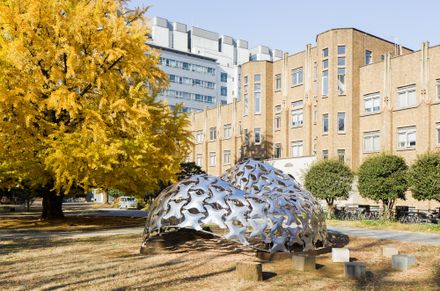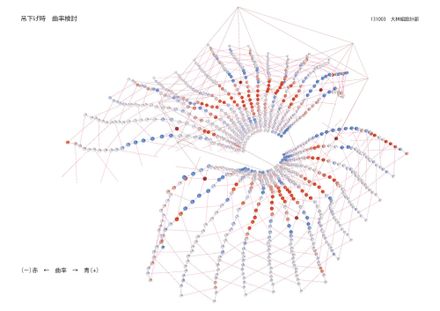
Ninety Nine Failures
ARCHITECTS
The University Of Tokyo Digital Fabrication Lab
PHOTOGRAPHS
Hayato Wakabayashi
YEAR
2013
LOCATION
Japan
CATEGORY
Pavilion
Text description provided by architect.
The pavilion project was the extension and expansion of the 1st year master studio project of Obuchi Lab, the University of Tokyo, as collaborative research with Obayashi Corporation.
The objectives were to examine experimental design/fabrication/assembly/construction processes which cannot be done solely by either a school or a professional practice and to explore possibilities related to the production of a new set of “problems” which could act as a catalyst for innovative architectural design research.
“Ninety Nine Failures” can be interpreted as “Ninety Nine Research Agenda Items”. One of our ultimate goals was to produce a pavilion that would introduce a new set of problems which students, researchers, and professional architects could share and pursue to expand the architectural discourse.
The global geometry of the pavilion was determined through a combination of digital simulations and a series of scale model tests. Digitally, we tested roughly 50 variations of different possible geometries that would allow the structure to unfold into a flat plane, but would work as a stable structure when formed into the target shape.
We chose a geometry which fulfilled this technical requirement and gave us the opportunity to provide an interesting spatial quality both inside and outside the pavilion. Next, working back and forth between digital and physical assembly simulations, we finely calibrated the structural/unfolding performance of the final target geometry.
We used very thin stainless steel sheets for the compressive components to achieve a super lightweight structure. The components were fabricated like inflated metal “pillows”; each component was composed of three metal sheet layers.
The middle sheet was the thickest of the sheets to give extra stiffness. All of the component edges were welded together and sealed, thus making the inflation process possible while also ensuring each component was watertight. The components were hydraulically inflated to act as a compressive structural element.
Each middle sheet was 0.8 mm, 1.2 mm, or 1.5 mm thickness, depending on component size. Outer sheets were 0.5 mm thick on both sides.
The components’ 3-dimensional forms were natural shapes produced upon inflation. Estimates of approximate thickness were checked through a simple series of full-scale mock-up tests.
255 unique compressive components were all networked to work as a coherent, integrated structural system. Their shapes were drawn in a program which we custom-created solely for this project.
A SERIES OF CRUCIAL FACTORS WERE CONSIDERED WHEN DESIGNING THE SHAPES OF COMPONENTS:
-Geometrical constraints due to global composition - Coordination between components to avoid undesirable overlap/conflicts between components (both when completed and when hung)
- Compatibility with welding jigs when fabricated with a robot arm - Secure capability to be inflated with hydraulic pressure (which directly influences structural performance of component)
5) Maximum porosity (as a pavilion) to allow light and minimize loading from wind pressure.
To fix those compressive components, stainless steel bolts were fixed to a double cable made of stainless steel with aluminum crimps. These crimps attached to bolt holes perforated in the corners of the compressive components.
One of the most interesting challenges in terms of computational design process was to program a digital simulation test to match our physical reality.
Without it, we would never have completed the project. Another interesting challenge was the organization of a smooth production process.
We began with the generation of component shapes that coordinated multiple complex parameters to output coherent data sets. A robot arm could then cut and weld the components in an efficient way.
While we expect to pursue further research in the following academic years related to the multiple “failures” we experienced during this project, we also plan to explore more research focusing on material behaviors and the hybridization of high and low-tech fabrication/assembly processes through the use of computational design.































